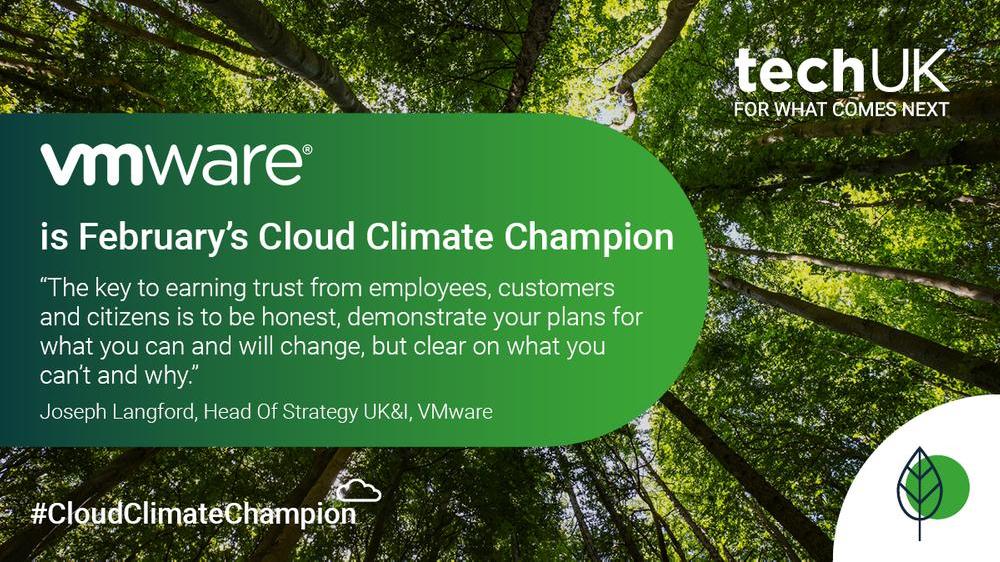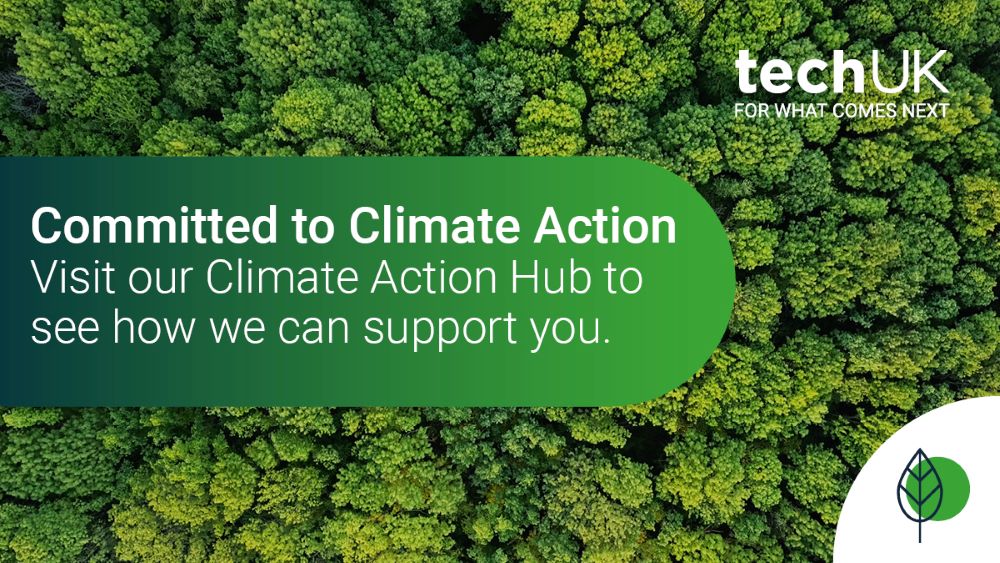Engaging ESG to contribute to the common goal - reducing carbon emissions, improving sustainability and preserving the environment (Guest blog from VMware)

Aurthor: Joseph Langford, Head Of Strategy UK&I, VMware
Today, driving innovation through Environmental, Social and Corporate Governance (ESG) is a crucial competitive advantage for companies around the world. This is especially true as we navigate complex, interconnected and global issues such as climate change, inequity, cybersecurity and more. All of which call for business leaders across industries to be focused and engaged.
Our portfolio of services has already driven impressive results, from the avoidance of greenhouse emissions through efficient use of hardware for cloud environments through to helping people gain equity in how they work with workforce enablement tools.
The benefits of ESG
A strong ESG proposition helps companies tap new markets and expand into existing ones. When governing authorities trust corporate actors, they are more likely to award them the access, approvals, and licenses that afford fresh opportunities for growth. ESG can also reduce costs substantially. Among other advantages, executing ESG effectively can help combat rising operating expenses, something that has been brought into sharp focus in the last 12 months of spiraling energy costs.
In an era of heightened social and societal consciousness, ESG plays a major role in attracting and retaining quality employees by instilling a sense of purpose, and increasing productivity overall. New research released by KPMG has found that 20% of UK office workers would turn down a job if ESG factors were deemed lacking, with almost half of workers wanting their employers to demonstrate climate and social commitments.
Everything, everywhere, all at once
While it is important to understand the multiple ways that ESG factors can create value, when it comes to translating this into delivery, there is no singular answer. The individual causes, objectives and possibilities that may inspire us are precisely that—individual. The focus could be anything from plants to people. It’s likely that the issues most important to those running the company or ESG programme will incline in different directions. Large companies often have dozens of ESG projects in motion at any time so boiling the focus down to a clear and deliverable plan is critical. None of us can do everything, everywhere, all at once.
While there is no definitive guideline on the cadence of reporting, current best practice recommendations suggest internal reporting to the CEO, executive team and Board of Directors on a quarterly basis and an external ESG report for other stakeholders annually. Key audiences to keep in mind for external reporting include shareholders, employees, partners, suppliers, and community stakeholders. Your internal and external reporting should be treated as an opportunity to inform and engage, as well as to further operationalise ESG practices throughout your organisation.
Honesty is the best policy
The key to earning trust from employees, customers and citizens is to be honest, demonstrate your plans for what you can and will change, but clear on what you can’t and why.
The last, but most important component of working to produce a positive impact in E, S or G is to be transparent. The key to earning trust from employees, customers and citizens is to be honest, demonstrate your plans for what you can and will change, but clear on what you can’t and why. A well-known outdoor clothing company, who prides themselves on their sustainability credentials, have been very clear about the fact they still have to use materials for some of the outerwear that have a high impact to the environment because they cannot find a suitable alternative, but they are also investing in searching for a suitable alternative and will switch when they can. This openness about why something is done a certain way is as important as the change itself – we all understand that, in most circumstances, we can’t just stop doing things a certain way, overnight - it may take time.
Agenda 2030
The VMware ESG strategy is formalised into what we call our 2030 Agenda, made up of 30 cross company goals – which can only be achieved through collaboration with our partners and customers and within our industry.. Collectively, they are a call to action to decarbonize digital infrastructures, to increase equitable access to opportunities through distributed workforce technology, and to earn trust with enhanced security and transparency. The results we are seeing are gathering momentum. They include, so far; reducing our greenhouse gas (GHG) emissions by 19%, supporting 14,122 nonprofits globally and engaging 26,251 employees in charitable activities. But we cannot do this alone, which is why we co-innovate with our entire stakeholder ecosystem including employees, customers, partners and our broader communities. And we’ve only just started…
A consistent measurement of progress
Like any successful strategy, VMware’s efforts are aligned to a framework that clearly outlines the journey and develops a consistent measurement of our progress. Not least the contribution to the common goal - reducing carbon emissions, improving sustainability and preserving the environment. Our portfolio of services has already driven impressive results, from the avoidance of greenhouse emissions through efficient use of hardware for cloud environments through to helping people gain equity in how they work with workforce enablement tools.
As we all find our way with creating achievable goals for ESG, it’s so important to learn from each other, so let us know how technology has helped your organisation's ESG vision become a reality?
techUK Podcast
This episode explores key issues around cloud, climate and sustainability
techUK – Committed to Climate Action
By 2030, digital technology can cut global emissions by 15%. Cloud computing, 5G, AI and IoT have the potential to support dramatic reductions in carbon emissions in sectors such as transport, agriculture, and manufacturing. techUK is working to foster the right policy framework and leadership so we can all play our part. For more information on how techUK can support you, please visit our Climate Action Hub and click ‘contact us’.


